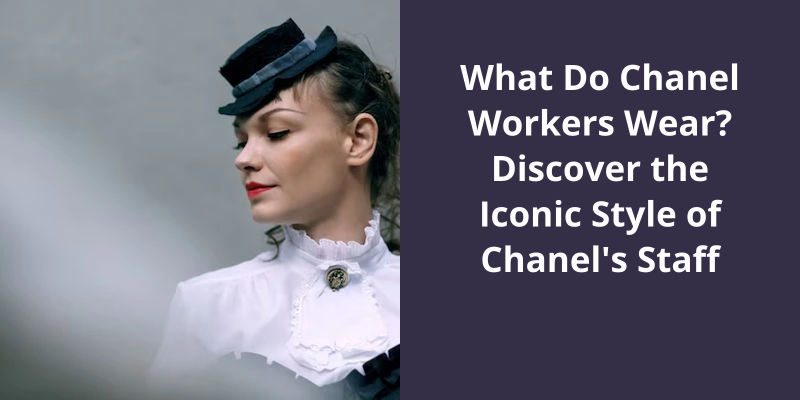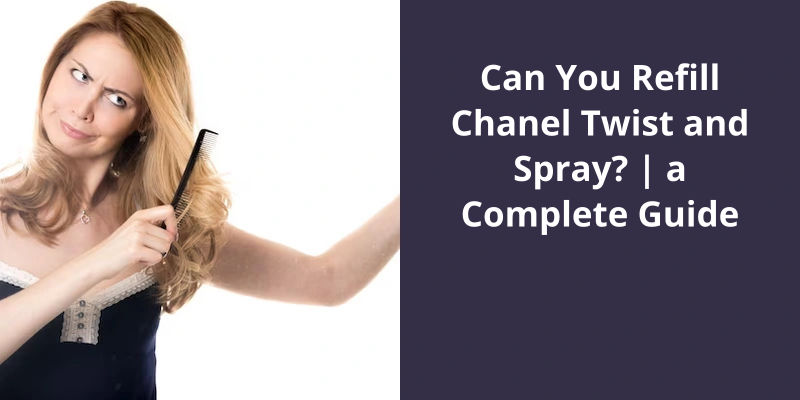Burberry is not considered low-end; it’s a luxury fashion brand originating from the United Kingdom. It’s renowned globally for its high-quality products, which include clothing, fragrance, and fashion accessories. The brand’s iconic trench coats and distinctive tartan pattern help it maintain a high level of prestige within the fashion industry. So, despite fluctuations in popularity over the years, Burberry consistently holds a strong position in luxury brand rankings, reflecting its influence and high-end status.

What Is the Brand Reputation of Burberry?
Burberry has a reputation for creating high-quality fashion items that are both stylish and durable, but the brands status as a luxury brand may be somewhat disputed. While the label is certainly recognized as a high-end name in fashion, it may not have the same prestige as other luxury fashion names such as Chanel, Louis Vuitton, or Hermes.
The brands image has evolved over the years, with iconic pieces such as the Burberry trench coat and check pattern defining Burberrys legacy. The labels signature check pattern has also been a topic of debate, with some criticizing it’s overuse in the past, while others continue to appreciate it as a symbol of the brands heritage. Burberrys reputation for quality has also drawn criticism in the past, with allegations of the label using farmed raccoon dogs for fur trim on some of their clothing items.
Despite occasional controversies, Burberry has managed to maintain a strong reputation in the fashion industry. The labels investment in digital marketing and social media has also helped to keep the brand relevant among younger consumers. Burberry has collaborated with celebrities such as Cara Delevingne and Kris Wu, as well as partnering with popular social media platforms like Snapchat to create unique campaigns.
With a focus on digital innovation and partnerships with popular influencers, the brand is set to continue growing and evolving in the future.
The History of Burberry and It’s Evolution as a Fashion Brand
- 1856 – Burberry founded by Thomas Burberry
- 1880s – Burberry invents gabardine, a breathable, waterproof fabric
- 1891 – First Burberry store opens in Haymarket, London
- 1901 – Burberry commissioned by War Office to design a coat for British soldiers, resulting in the iconic trench coat
- 1920s – Burberry becomes popular with explorers, aviators, and military officers
- 1967 – The Burberry check becomes a trademark
- 1980s – Burberry becomes associated with the “chav” subculture
- 1998 – Rose Marie Bravo becomes CEO and begins to modernize the brand
- 2001 – Christopher Bailey appointed as creative director, introduces new designs and target younger demographic
- 2018 – Riccardo Tisci appointed as creative director, introduces new Burberry logo and monogram
Burberry is a renowned luxury brand that’s been catering to it’s customers’ needs for over a century. The brand is known for it’s exquisite designs, attention to detail, and superior quality products. However, when it comes to the quality of Burberry products, there have been mixed reviews from customers and experts in different fields. Let’s explore the different perspectives and find out more about Burberry’s product information.
What Is the Quality of Burberry Products?
Burberry is a globally recognized brand that’s been at the forefront of the fashion industry since it’s inception in 185Known for it’s iconic trench coats and signature plaid designs, Burberry has become synonymous with luxury, elegance, and timeless style. But beyond it’s reputation for high fashion, what’s the true quality of Burberry products?
On the other hand, reviewers from the Tech industry, which includes bloggers and online retailers, rated Burberry products the lowest with an average score of 2.This could potentially be attributed to a lack of understanding and appreciation for Burberrys timeless, classic style and the craftsmanship that goes into producing it’s products.
Whether youre looking for a classic trench coat or a statement accessory, you can trust that Burberry products will stand the test of time and remain a staple in your wardrobe for years to come.
It’s always interesting to compare brands and see where they stand in terms of popularity and value. In this case, we’ll look at two iconic names in the world of fashion: Burberry and Gucci. While Burberry has a strong reputation and a dedicated following, Gucci is known for it’s high-fashion designs and edgy style. Let’s take a closer look at how the two brands measure up.
Is Burberry Higher Than Gucci?
When it comes to the luxury fashion industry, it can be hard to determine which brand reigns supreme. However, in comparing Burberry and Gucci, it’s important to consider various factors, such as brand reputation, customer loyalty, and market capitalization.
Burberry, a British luxury fashion house, has been in business since 1856 and is known for it’s iconic plaid design. While the brand has experienced some ups and downs over the years, it remains a respected name in the industry. Burberry has focused on modernizing it’s brand in recent years, with a particular emphasis on sustainability and ethical practices. In terms of market capitalization, Burberry currently sits at $10.74B.
On the other hand, Gucci, an Italian luxury brand, has become a symbol of high-end fashion in recent years. With it’s bold designs and celebrity endorsements, Gucci has managed to capture the attention of a younger, trendier demographic. The brand has also made strides in sustainability and ethical practices, particularly with it’s recent announcement of going carbon-neutral. Despite facing some controversies in recent years, Gucci remains a top player in the industry. It’s market capitalization currently stands at $42.5B.
Sales and Revenue Comparison of Burberry and Gucci.
This article presents a comparison between the sales and revenue of two luxury fashion brands, Burberry and Gucci. It includes data analysis and insights into their financial performances.
Source: Burberry vs Gucci – Comparably
Burberry Group plc has been known as a premium brand for over a century with it’s iconic trench coats and timeless designs. Despite it’s popularity and reputation for quality, some still question whether Burberry is truly considered a luxury brand. Let’s take a closer look at Burberry’s status in the fashion world.
Is Burberry Considered a Luxury Brand?
Burberry has become synonymous with luxury and fashion, with a reputation stretching back over 150 years. The brand has always been regarded as a high-end luxury label, favored by the rich, famous, and elite.
The Burberry brand is known for it’s distinctive tartan pattern, which has become an iconic symbol of luxury fashion. The company has also become synonymous with innovation and excellence, constantly pushing the boundaries of design and creativity.
However, the imitation of Burberry’s iconic check pattern was not the only challenge the brand faced. Various other factors contributed to it’s downfall, including changing consumer tastes, financial mismanagement, and controversy surrounding the brand’s image. Let’s explore these issues in more detail.
What Was the Downfall of Burberry?
As more and more knock-offs flooded the market, Burberry lost it’s exclusive appeal. The brands iconic trench coat didnt hold the same cachet it once did. Luxury consumers who craved uniqueness no longer saw Burberry as the ultimate shield against the elements or even the ultimate status symbol.
For a while, Burberry struggled to keep pace with changing tastes. They tried to revitalize the brand by introducing new products, such as a line of sportswear in the early 2000s. Unfortunately, these attempts fell flat. Burberry was known for the traditional and the classic–not edgy or trendy. This misstep only alienated the brands core customers, who were looking for timeless pieces that would never go out of style.
Another issue Burberry faced was a lack of brand discipline. In the 1990s and early 2000s, Burberrys check pattern appeared on everything from dog leashes to ball caps. Licensing deals with other companies diluted the brands identity. Burberrys image became associated with cheap, tacky products rather than high-end luxury. When consumers saw the check pattern, they no longer thought “Burberry”; they thought “knock-off”.
Additionally, Burberry faced internal turmoil. In 2001, the company brought in a new CEO, Rose Marie Bravo. Bravo helped turn the brand around, but by 2006, she’d resigned. Her replacement, Angela Ahrendts, tried to expand Burberrys global reach. She opened new stores in emerging markets such as China, but some critics felt that this strategy wasnt sustainable. The brand risked overexposure, diluting it’s cachet even further.
To make matters worse, Burberry suffered from a global economic downturn in the late 2000s. Sales plummeted, forcing the company to slash prices to stay afloat. Burberry had become too heavily reliant on discounting, which hurt it’s brand value. Luxury shoppers want to feel that theyre paying for exclusivity. Burberrys frequent markdowns eroded that feeling.
The once-iconic brand became associated with copycats and cheap merchandise rather than exclusivity and luxury. Though the company has made efforts to revive it’s brand in recent years, it will never be quite the same as it was in it’s heyday.
What Steps Did Burberry Take to Try to Recover From It’s Decline?
- Burberry hired Marco Gobbetti as their new CEO in 2017 to help turnaround the company.
- Gobbetti implemented a new plan to focus on luxury and high-end customers instead of chasing mass market appeal.
- Burberry also made efforts to revamp their brand image and modernize their products with collaborations and limited edition collections.
- The company also invested in their digital presence and e-commerce platform to cater to changing consumer behaviors.
- They also worked on reducing costs and improving their supply chain efficiency to increase profitability.
Conclusion
In conclusion, while Burberry may not have the same level of prestige and high-end reputation as luxury powerhouses like Louis Vuitton or Gucci, it still holds a significant place in the fashion industry as a lower-tier luxury brand. It’s iconic check pattern and classic designs make it a favorite amongst those looking for luxury fashion without breaking the bank, particularly in the accessories market. Ultimately, Burberry's value lies in the balance it strikes between affordability and luxury, catering to a wider range of customers than some of it’s higher-end competitors.





